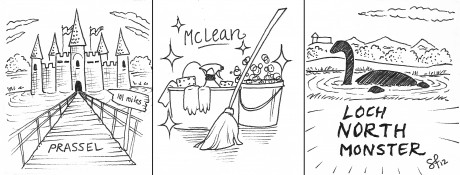
It’s no secret that the world of journalism is changing due to the digital age. The words “convergence” and “multi-platform journalism” are becoming the cornerstones of storytelling in newsrooms across the nation, causing some to get excited, others to panic and everyone to start thinking about what it means to keep up with technology and their audience in this fast-paced digital age.
An annual report on American journalism conducted by the Pew Research Center titled “The State of the News Media 2012″ surveyed more than 3,000 U.S. adults and found that a growing number are becoming “multiplatform digital news consumers,” meaning that they get news on their phone, their tablet and/or their laptops in addition to the traditional print platform. While 54% still use their computer as the primary digital method of receiving news, 23% of participants admit to receiving news regularly on at least two digital devices.
These new trends that reflect consumer behavior are certainly having an impact on the industry, with higher-ups having to take notice whether they like it or not. This past week, long-time magazine powerhouse Newsweek announced that it will no longer be producing content in print form. Starting with the new year, everything they publish will be found only online. While executives of Time magazine (Newsweek‘s biggest competitor) show no signs of following suit, this dramatic shift speaks to the pivotal age we are currently experiencing on both a national and local level.
College publications are no exception. As children of the digital age and social media gurus, you would think our generation would be quick to embrace the change and turn our backs on print journalism for good, but studies show that college kids (Trinity students included) are still drawn to the old-fashioned version. Bill Krueger from Poynter.org wrote in the fall of 2010, “The printed versions of college newspapers continue to thrive, with students grabbing copies as they go from one class to another. It’s not unusual to see students reading about the latest campus news while eating a quick lunch or taking a break on the lawn.”
So while we’re thankful that Krueger is right, we also aren’t blind to the benefits of multi-platform journalism as a more interactive and engaging viewing experience. For years, we have been trying to partner with TigerTV and other media outlets on campus to cover stories using a variety of mediums, but it’s been difficult. At first, it was the lack of hosting capabilities by both TigerTV and the Trinitonian to feature video content online. This was only complicated by the turnover in staff each year where previous management graduated only to be replaced by new management who were focused more on the primary job of each media outlet: to produce their primary product. But just like with other news organizations, focusing on one medium no longer seems to be an option.
Enter our ehanced websites. TigerTV shows can now be viewed online at www.trinity.edu/tigertv and unlike previous years, almost all of the content of the newspaper’s print edition can be read online at trinitonian2020redesign.mystagingwebsite.com. Next week we will combine our efforts to bring you, the reader, a multi-media effort covering the five-year anniversary of the Mississippi Miracle, a football game involving Trinity University and Millsaps College where a record breaking 15 lateral passes brought national attention to Trinity.
Following the publication and broadcast of our coverage, we want to hear from you. Did you feel it enhanced your experience? Did it not make a difference? Let us know.






